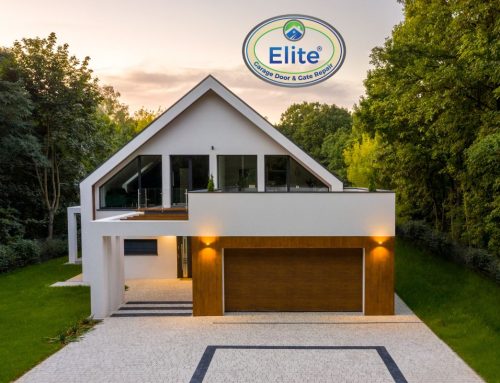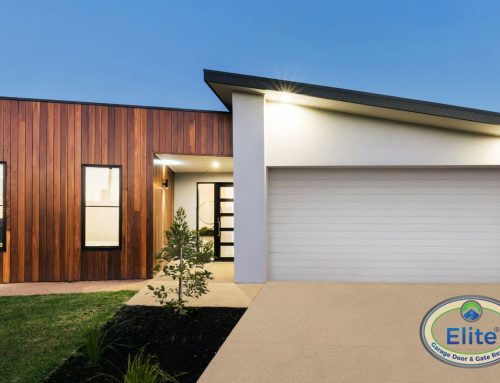Getting a garage door is no doubt a sustainable investment but keeping it eco-friendly in the long run is quite complicated.
If you’re looking to add value to your household and improve its sense of security, you definitely need a garage door. It might be often overlooked, but the fact of the matter is more than 1/3rd of Americans currently possesses this entity. The main reason for its popularity is the fact that it provides housing for family cars. Furthermore, it complements the available garage space, allowing it to be utilized as a workshop or even an extended living area.
However, having an eco-friendly garage door is a different story as there are many complications down the road. That is why we will discuss some of the ways through which you can make your garage access entirely environmentally friendly without spending a huge buck. So, let’s get into it!
Table of Contents
Factors that Influence Eco-friendliness of a Garage Door
As you look for an eco-friendly door, you want to consider several factors responsible for damaging its integrity in the long run. Things like insulation, electricity dependence, build materials, type of components, availability of wind, and weather influences one way or another interfere with the environmental constituents. That’s why you need to take special care over these aspects and make your garage door green.
Following are some of the common factors which should not be overlooked;

Eco-Friendly Garage Door
1. Type of Material
Having an Eco-Friendly Garage Door comes down to the material that is incorporated within the construction. Generally, you want to look for a door made up of materials that are easy to maintain and resilient and that hold up quite well in any local climate. Primary garage door materials include;
Steel
Steel is one of the standard garage door weather strippings that stand the test of time due to its enhanced wind resistance. So, for the people living in hurricane-prone areas, it might be an ideal choice. However, it is susceptible to corrosion, so not recommended for users living near the seaside.
Aluminum
Aluminum is naturally lightweight, so it works wonders with motorized openers. They can also be painted and are resistant to corrosion, but the downside is that they might require a bit of maintenance.
Fiberglass
Fiberglass is well suited for extreme weather conditions, so it’s a proper garage door insulation substitute. It regulates the internal temperature throughout the season and has little to no impact on the environment. One of the major downsides to it is that it is vulnerable to high winds and sometimes noisy.
Wood
It is a widely used material because of its durability and added aesthetics. It can be a natural insulator most of the time, but the main selling point is its eco-friendly nature.
2. Sustainable Manufacturing
In addition to the material type, it’s worth noting what manufacturing processes were behind in making the garage door. A genuinely eco-friendly door is made sustainable right from the start and has a manufacturer that has a profound reputation in the industry. Therefore, it is highly advisable to check FSC- and SCS certifications before the purchase. Moreover, the door itself should also be regulated adequately before being delivered. So, make sure that your particular model is ideally packaged in biodegradable covering.
3. Energy Efficiency
Power regulation or energy efficiency is another factor that you should defiantly consider in pursuing your garage door. Like it or not, just like other appliances, automatic garage doors consume energy, so you should act wisely in this regard. Make sure to opt for a model that is self-sufficient and is fully comprehendible with the Door Opener. Speaking of which, numerous garage door openers work under solar panels, so it’s worth getting them out for the sake of the planet!
4. Overall, lightning
Another component of the garage space has sufficient lighting, especially at nighttime. However, this again means added reliance on electricity which in most cases is not eco-friendly. Thus, the best practice in this regard is to opt for CFL and LED bulbs. They provide double the brightness while still remaining energy-efficient and eco-friendly in the long run.
Similarly, investing in windows or skylights is also a great alternative. They will reduce electric consumption during the day and keep non-toxic gasses incoming from your garage at bay.
Additional Tips on Having an Eco-Friendly Garage Door
If you want optimal garage door insulation and eco-friendly implementation, then you should defiantly follow these tips;
- Try to go for a garage door structure that could be installed easily, and its components are Easily Recyclable.
- Invest in garage door weather stripping that provides optimal insulation in responding to your local temperatures.
- Incorporate ecologically sound electronics within your garage space
- Make sure that you invest in a solar-powered opener for the best results.
- Prioritize cleaning your door to reduce grime and dirt at least once a year.
Bottomline
So, this was our brief guide on incorporating an Eco-Friendly Garage Door. The ways discussed above will make sure that you maintain an optimal footprint on the environment while at the same time keeping your garage area spacious. If you’re still confused or unsure about your decision, it’s a great idea to take guidance from a professional.









Leave A Comment